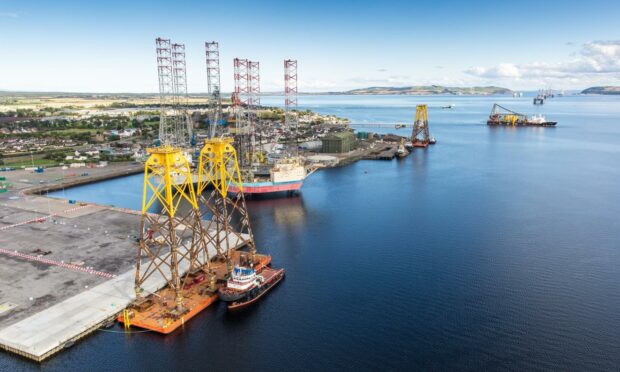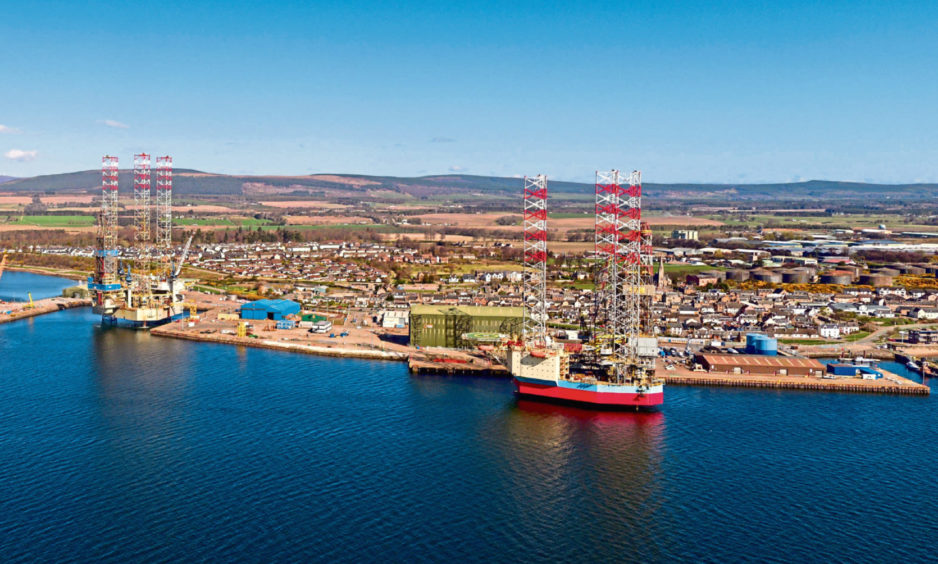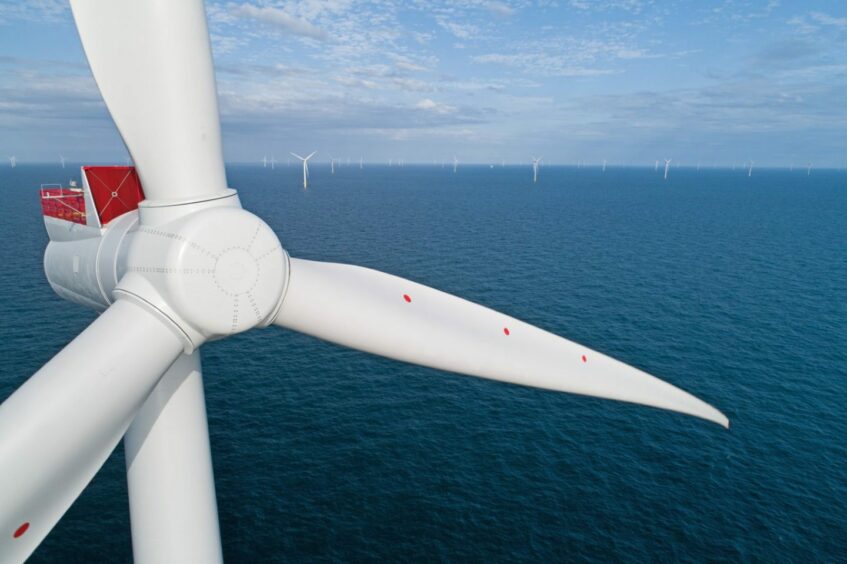A successful Inverness and Cromarty Firth green freeport bid could create a “super wind hub” assembly and production facility on the firth and trigger 20,000 new jobs across the Highlands and the UK says the consortium behind the proposal.
The clock has started ticking towards a decision this summer on where the two green freeports for Scotland will be located, with Opportunity Cromarty Firth (OCF) pointing to Scottish manufacturing opportunities should it pull off the bid in the face of fierce competition with several other groupings.
An initial report from independent company BiGGAR Economics estimates a “further 20,000 jobs” for the Highlands and UK should authorities plump for the submission by OCF in addition to windfarm staffing requirements.
Deadline for the green freeport submissions is 20 June at 10am, but the precise number of new Highland jobs remains an unknown quantity.
“We have done an initial (jobs) analysis – it is the question everyone wants to know,” Port of Cromarty Firth (PoCF) strategic business development manager Joanne Allday told The Press and Journal.
“There is already a lot happening that will generate a significant number of new jobs particularly in the Highlands.
“We are going to be losing a lot of jobs in oil, gas and the nuclear sector so it is difficult to put a net figure.
Biggest opportunity for Highlands since oil and gas
“The Highlands has been promised lots of jobs in the past and those projects have not delivered, but we want to be honest with our communities.
“I have no doubt this is the biggest opportunity the Highlands have had since oil and gas.
“The size and scale of these projects is not something I have ever seen in my career.”
OCF argues the Cromarty Firth is the only location in Scotland able to deliver the ambitions set out in the UK Government’s Energy Security Strategy, compete with established facilities abroad and create associated well-paid jobs and business opportunities locally and nationally.
International developers, Falck Renewables, BlueFloat Energy and Ørsted UK, which have secured ScotWind seabed leases, also voiced their support for the Highland green freeport bid this week, saying they were convinced it would “build a pipeline of jobs” for the benefit of Scotland and the UK.
£26bn of investment in new offshore windfarms
The UK Energy Security Strategy includes a five-fold increase in offshore wind capacity by 2030, a target of 5GW of floating wind and rapid industry investment in electrifying offshore production of oil and gas to reduce emissions.
Earlier this year, Crown Estate Scotland’s ScotWind leasing round announcement signalled £26 billion of investment in new offshore windfarms, the majority of which are on the doorstep of the Cromarty Firth and underpin a 50-70-year pipeline of projects for the area.
Speaking on behalf of OCF, Invergordon-based PoCF, chief executive Bob Buskie said: “This report shows how the Highland economy will be transformed if Cromarty Firth gains green freeport status.
“It will also help the firth level up and tackle a number of areas of deprivation as well as enabling the UK to meet the local content targets set in the Offshore Wind and North Sea Transition Sector Deals.
“With a long-term pipeline of multi-billion-pound infrastructure projects, it would create well-paid, sustainable job opportunities, enabling families to stay in the area, attract new talent and revolutionise the economics of the region.”
OCF plans to publish further findings of the economic research once it is completed in the coming weeks.
The OCF consortium was launched more than two years ago, with the aim of creating a free trade zone centred on the Cromarty Firth, to help secure a sustainable long-term pipeline of energy projects and jobs in the Highlands.
It is backed by more than a dozen regional businesses, as well as public sector organisations and academic bodies, including the Highland Council and the University of the Highlands and Islands (UHI).
Invergordon and Nigg key to offshore wind
The port facilities at Invergordon and Nigg on the Cromarty Firth have already supported more offshore wind projects than any other Scottish ports.
The Port of Nigg is currently delivering the storage and marshalling work for Scotland’s largest and the world’s deepest fixed-bottom offshore wind farm, Seagreen, the third major offshore wind project to be delivered by Global Energy Group at the facility.
The £2.5bn 588MW Beatrice and £2.6bn 1GW Moray East offshore windfarms were both constructed and marshalled from the Firth and Invergordon and Nigg supported two floating windfarms, Hywind and Kincardine.
Including activity at Port of Inverness, which is part of OCF, the region has also stored and handled hundreds of onshore windfarm components.




Conversation